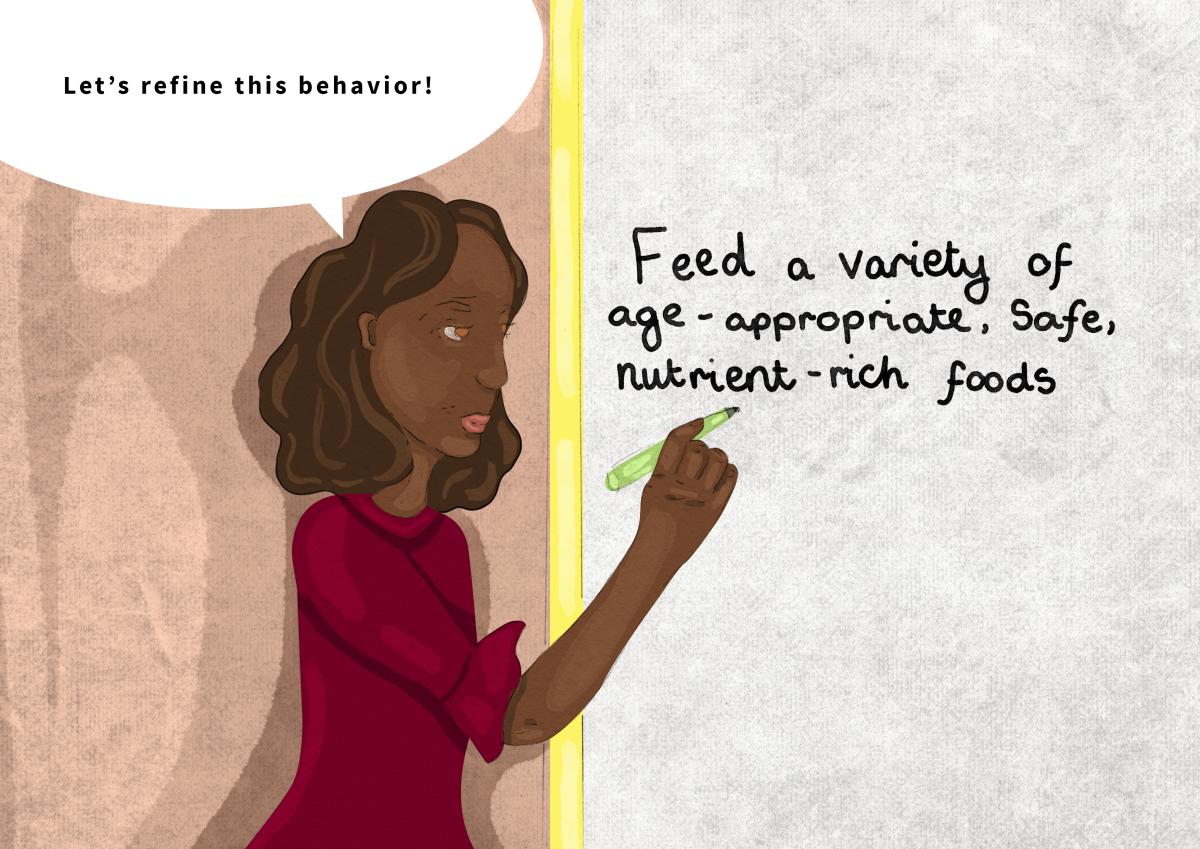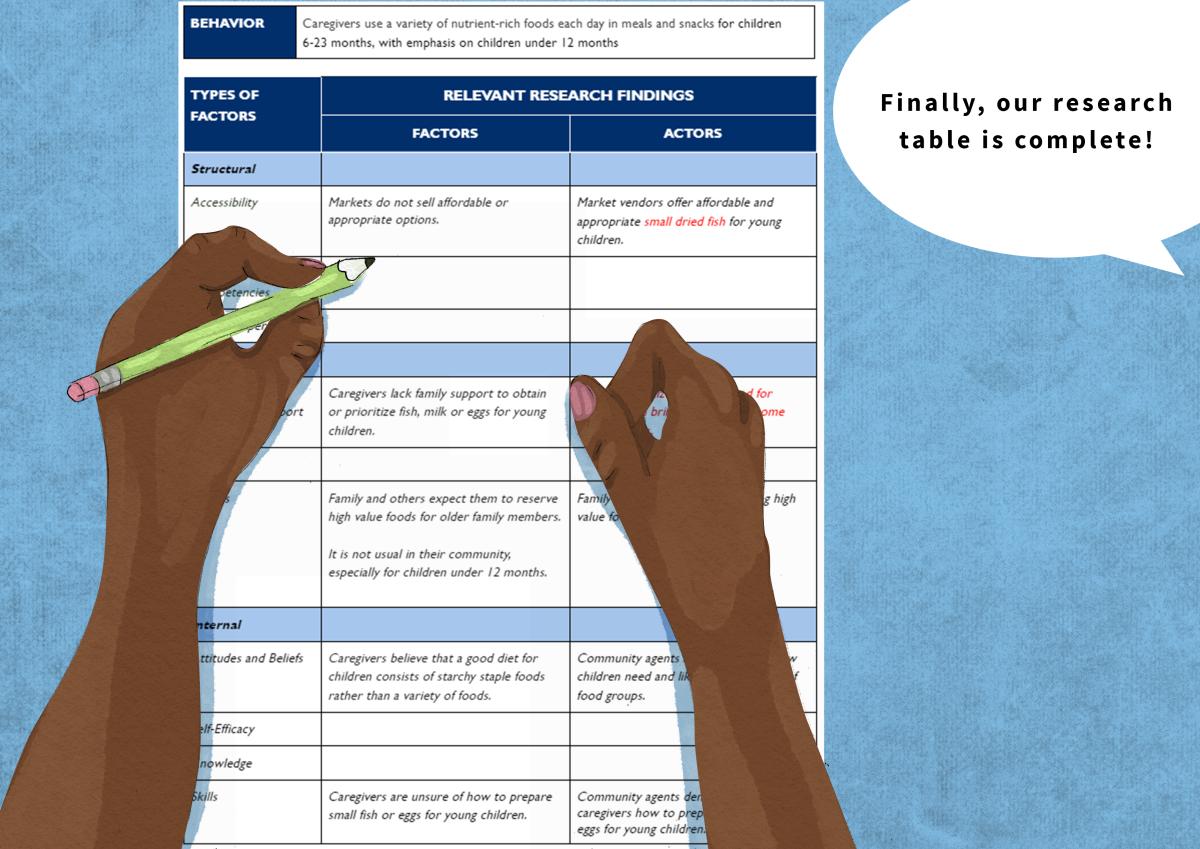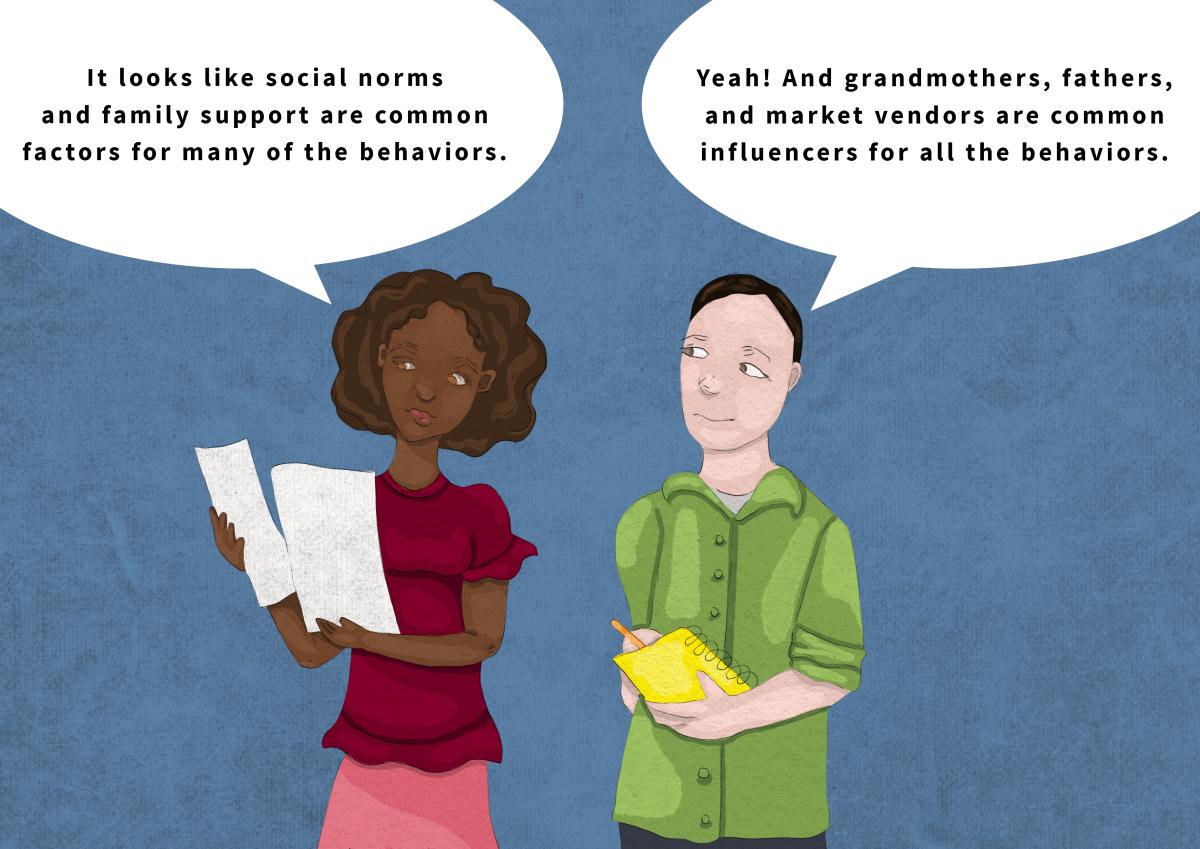Analyze your formative research findings to prepare—
- a report that answers your research questions and describes why they are meaningful in the context
- a strategy to improve complementary feeding, which will be based on the findings in the report.
The Using Research to Design an SBC Strategy tool is a guide for the steps below.
3.1 Analyze findings for each priority behavior and factor.
Analysis will ground your SBC strategy in context-specific evidence. Add findings from formative research to the research tables you completed during your desk review in module 2 (worksheet 2.1).
3.2 Confirm or refine priority behaviors.
Review priority behaviors to refine or specify what is feasible in the program context.
3.3 “Star” factors for priority behaviors and create linked pathways.
“Star” factors that research shows are strongly linked to priority behaviors. Look for factors that are—
- critical to most of the participant groups
- feasible to address given your program’s focus, resources, and partners.
Transfer the starred factors over to worksheet 3.1. For each starred factor, link to influencers or supporting actors who need to take action to reduce the barrier or enhance the support and then activities to address the factor.
Figure 2. Drawing Behavioral Pathways
Consider activities from three levels:
- Enabling environment: Institutional- or policy-level activities to ensure funding; strengthen structures and processes that deliver or manage programs, products, or services; work with partners or networks; and develop, approve, and/or enforce national policies or guidelines
- Systems, products, and services: Organizational-level activities to build or improve physical structure, introduce a new technology, expand or strengthen supply chains, or improve the quality of service delivery
- Demand and use: Individual- and interpersonal-level activities to generate commitment to, inform, influence, motivate, mobilize, or teach skills to practice the behavior
UNICEF’s Action Framework for Complementary Feeding maps the roles of food, health, WASH, and social protection systems in improving young children’s diets in the complementary feeding period.
3.4 Develop the SBC strategy.
It will serve as a “roadmap” to ensure that needed activities to address critical factors are coordinated to achieve SBC outcomes and impact.
3.5 Refine the SBC strategy with stakeholders.
Share, discuss, and reach a consensus on the cross-sector approach to improving complementary feeding. Use worksheet 3.2 to decide who is best positioned to carry out the various activities in the strategy.







